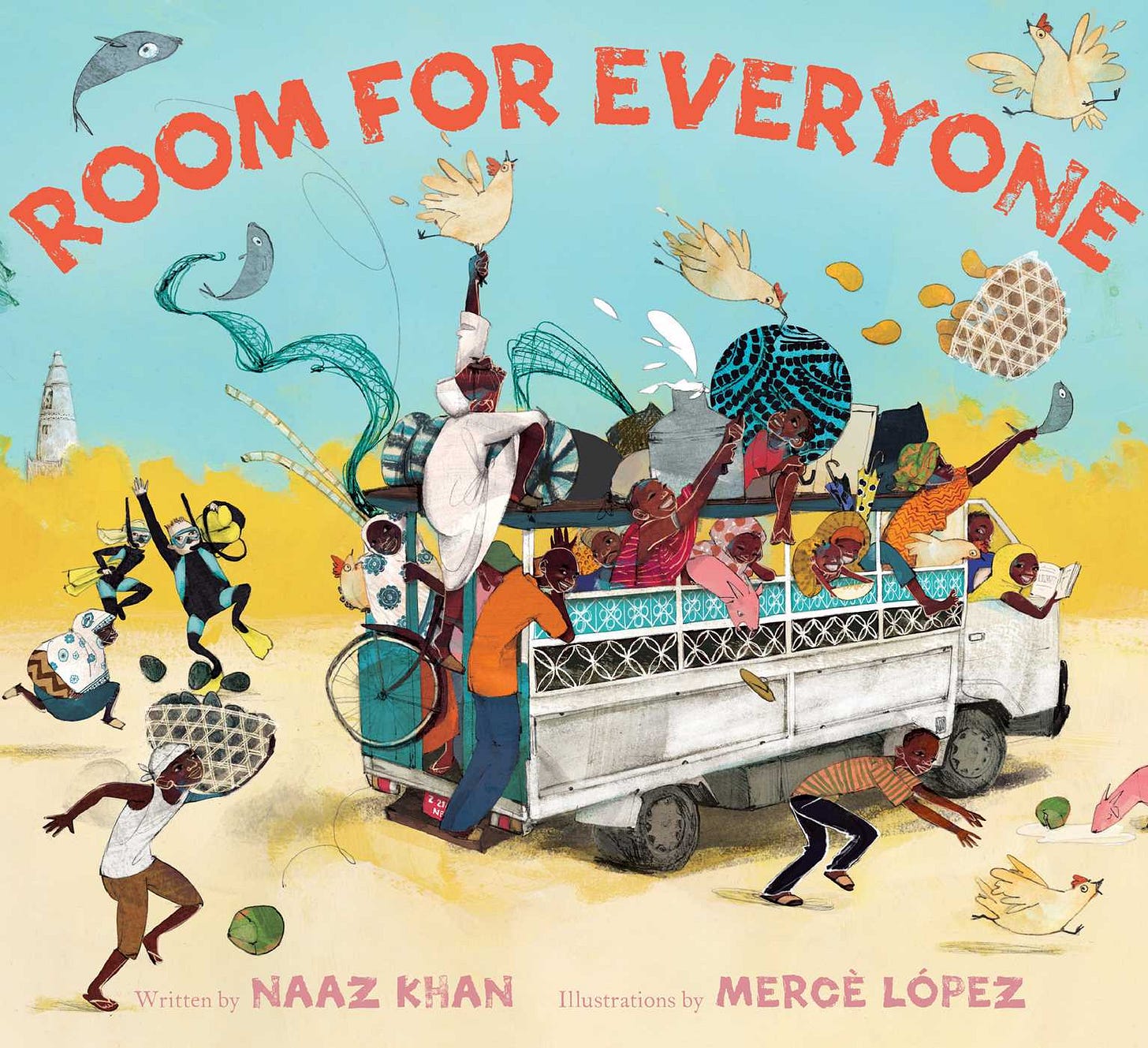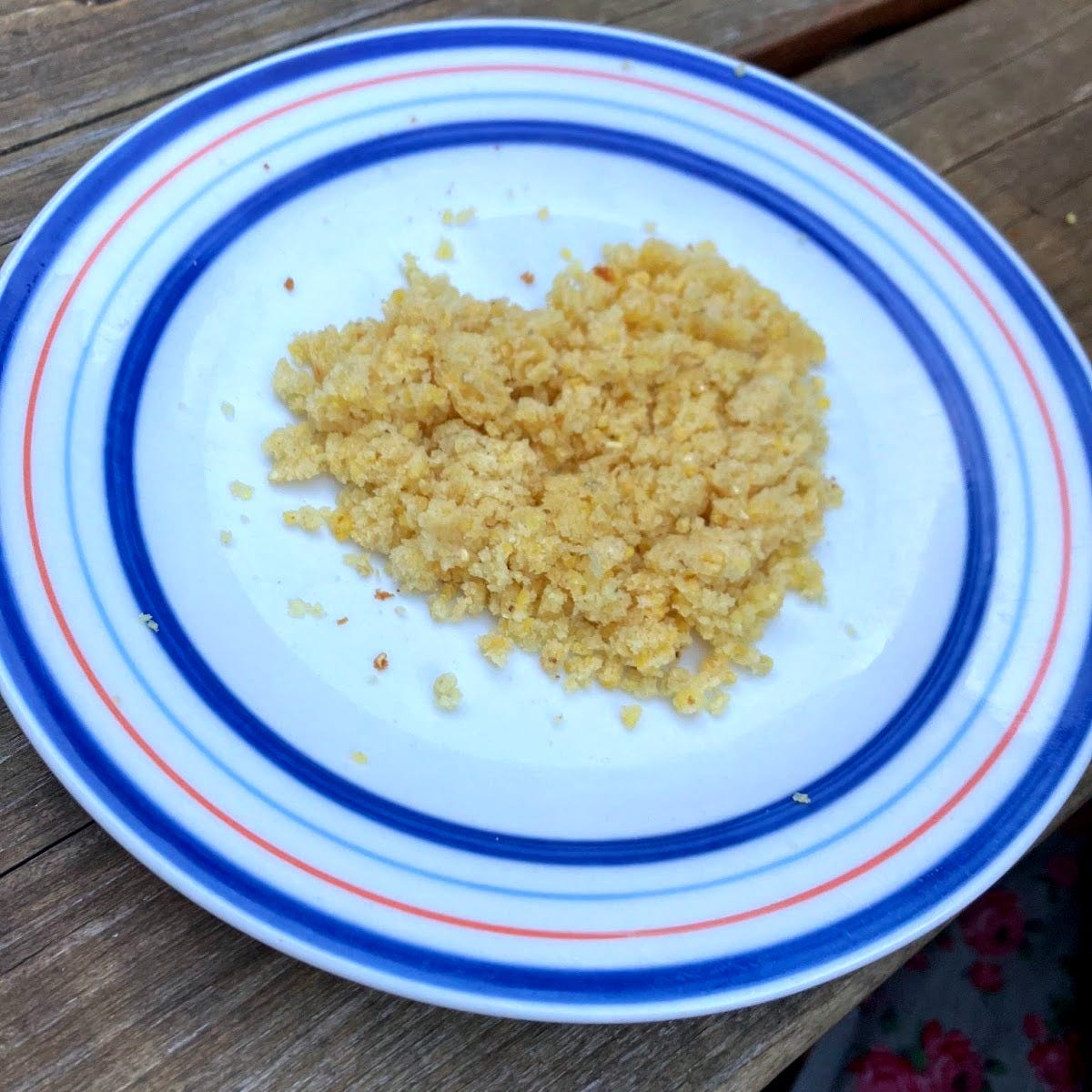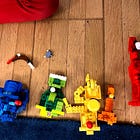Nine Books to Read with the Kids in Your Life (and Two to Approach with Caution)
Talking about children’s literature with Sri Juneja of Readable Moments
Happy Teacher Appreciation Month! I’m offering educators 30% off annual subscriptions to The Auntie Bulletin in the month of May. This deal is valid regardless of the age of your students. Email me at auntiebulletin at gmail dot com with a photo of your teacher ID or an explanation of how you’re still a teacher even though you don’t have a teacher ID (piano teachers, I’m looking at you), and I’ll send you a discount code!
Read to the end of today’s post for an opportunity to win a 12-month paid tier subscription to The Auntie Bulletin! This month’s survey is about Auntie impostorship and how we can feel belonging among chosen family.
Now Let’s Get To It
All Aunties should have a small but excellent home library of great board books, picture books, and chapter books that we can enjoy reading with the kids in our lives. I’ve always been a big reader, but I haven’t stayed particularly up to date with what the kids are reading these days, so my own home library of kids’ books mostly comprises books I liked when I was young and still like now. Most of the time when I discover a new-to-me book, it’s through recommendations from the parents and kids in my life. But I do have to genuinely like the book myself – I don’t want to waste one minute of my wild and precious life reading Paw Patrol: Skye’s Time to Fly.
In today’s post, I’m talking with parent and longtime Auntie Sri Juneja, who writes the wonderful newsletter, Readable Moments, about the books she likes to read with her child. One of my favorite kinds of posts from Sri’s newsletter is a recurring feature she called “Classics Corner,” in which she revisits the beloved classics of our youth (and our parents’ youth) and explores how they stand the test of time. Corduroy, it turns out, holds up (because of course it does, it’s perfect in every way); Curious George – ahem – does not.
In the conversation below, Sri and I talk about going to the library with kids and choosing books that reflect immigrant and non-white voices and experiences. We also unpack some kids’ classics that you likely know and may even love. Then, Sri offers reading recommendations for each age group – kid-and-adult-friendly books that we Aunties can genuinely enjoy reading with the kids in our lives.
Lisa: How did you start writing Readable Moments?
Sri: It came to me in one of those weird, hazy jet lag dreams. We were traveling to India to visit my family, and we had decided there's no way I'm going to bring a 13-month-old on a 20-hour flight. So we broke it up in the middle — we were in Germany at the time. I couldn't sleep, and it was one of those times where you're half in dreams and still alert.
It was like, I love this, this is my hobby, this is my passion. I want to share it with my kid. And I felt like the scene was so dominated by white voices. I wanted to come at it with my immigrant background, and with the lens of someone who maybe hasn't always had the same history or doesn't always feel the same way a white reader would.
Lisa: And you’ve been an Auntie since you were a kid!
Sri: I was basically groomed to be an Auntie.
Lisa: Me too!
Sri: Growing up, I was the oldest kid in our family’s community, so naturally all the kids would gravitate to me and I'd be the babysitter. I was several years older, so I was like, “oh, I’ll hold the baby while the little ones run around!”
When I was an adult and my friends had kids, and I had actual nieces, the easiest thing was to ask on the phone, "What are they interested in? I'm going to the library to pick some books out.” I would always have about four books checked out at the library based on what the parents had told me. Then, once the kids were here, I would go to the library with them and say, “Go crazy, knock yourself out, get whatever you want, and we can also come back.”
There’s so much programming at the library for kids. I leave the kids sitting there reading, and I’m over reading my stuff. My sister-in-law used to be like, “How are you doing this, how are they reading so much?” and I’d be like, “well, there’s nothing else to do at my house!”
Lisa: That's such a good insight. We end up doing so much reading and drawing at my house because I just don't really have that many toys.
Sri: Exactly! Why do I need this many toys? I'll keep a couple, but it’s still my space! We’re going to do basically a kid version of what I would like to do.
Lisa: Let's talk about your Classics Corner. It’s such a cool thing you're doing where you go back and look at these beloved classics that have been around for many decades. You do a summary and quick orientation to the book. Then you do a modern take on how to think about the book – which may or may not have stood the test of time. In some cases, you say it hasn't totally stood the test of time but maybe it's worth it and here are some ways to think about that. And other times – well, let’s talk about Curious George, because you wrote a truly blistering and totally needed takedown.
Sri: It's funny because I wrote that, published it, and then the following Monday my kid comes home and says, "Guess what we watched in school – Curious George!" I was like, how do I react to this? Fortunately, the TV show is much more for modern day audiences and doesn't have the same problems as the original.
Lisa: Remind us what happens in Curious George?
Sri: This white guy, presumably in New York City, decides, "I'm going to shop around for a zoo to take this monkey that I have abducted from Africa." Of course, the monkey does crazy things because he’s a monkey in a big city – he’s been taken from his home. People are yelling at this monkey like, "You're so stupid!" It feels icky and gross.
Lisa: It's a story that's validating like, it's okay to go to Africa and kidnap a sentient being and then bring them back to the United States and try to sell them. There's so much subliminal messaging happening. As you said very directly in your post on this book, it basically celebrates the slave trade.
Sri: I was nervous about writing about Curious George because these are beloved classics. I don't want to tear down someone's favorite book that they loved when they were growing up. I realized you should absolutely read these books – but also explain to kids that, hey, we don't believe these things anymore.
Lisa: I also really liked your Classics Corner about Why Mosquitoes Buzz in People's Ears, which is a book I hadn't actually encountered. You wrote that it’s a mashup of different folk tales?
Sri: These days, you find so many children's books being written by a very diverse group of authors. It's not just white people taking stories from other cultures and retelling them – but that’s what the white author of Why Mosquitoes Buzz in People’s Ears did in 1975.
To be clear, the book is truly a magnificent work of art. I want to rip the pages out and hang them around my house.

But I needed to do some digging to see where the source material came from. I looked hard, and I could not find it. The closest I could get was an Igbo tale, which when you hear the story, is actually totally different. What I finally found out is that the author, Verna Aardema, would basically read newspaper clippings of people going to Africa and just imagine what that was like. Then she’d make stuff up. Some of the animals in the book aren’t even native to Africa.
Lisa: If you were reading Why Mosquitoes Buzz in People’s Ears with a child, what kind of conversation would you have with them about it?
Sri: A lot of it would be, what is a folktale? It's stories that we pass down across generations, and I would be like, let's dig into this a little. Africa is a whole continent, not just one culture. Is this a good way to write a book, or do you think the author should have done it a different way? I would try to ask questions. I wouldn’t want to ruin a book that a kid likes, but I don’t want her to think that just because it’s in a book, we can shut our brains off.
Sri’s Reading Recommendations
Ages 0-3
I love Everywhere Babies by Susan Myers. The illustrations are by Marla Frazee, who is just incredible. You want to reach in and grab these babies and hold them to your chest because they're so cute and human and messy and perfect. It's so much fun to read—the rhythm, the rhyme.

I love Rina Singh board books, and My Heart Beats is extra special. She talks about how different languages have different words for things – like in the U.S. we say a dog barks "woof," but in India dogs are said to make other sounds. She shows how other cultures tell you what a heart sounds like—dhak dhak, boom boom. It's so interesting.

Ages 4 and Up
Sri: I recently got to interview Gaia Cornwall about her beautifully whimsical new book, Fairy Walk. Cornwall is most well known, though, for Jabari Jumps. I feel like I was Jabari when I was a kid. To this day, swimming is not my forte. You see this kid and his totally understandable fear of jumping into the pool from a tall diving board. His father coaches him in such an empathetic way.
Lisa: There's a part where the dad says something like, "Maybe you just need a little rest."
Sri: Yes, exactly! I have said that many times.
Lisa: When I think about that book, I think about the amazing illustrations. I love the one from Jabari's perspective where he's standing on the diving board with his toes hanging over, and you look down at the pool, and it looks like it's a hundred feet away.
Sri: I was like, "Oh God, I'm terrified!"

Room for Everyone by Naaz Khan is about this crazy bus ride where a little boy is like, "How are we going to fit all these people and random stuff on this bus?" And the driver says, "No, no, we got this. There's room for everyone." The situations get crazier and crazier. You're learning counting, rhyme, rhythm, beats. Then suddenly, catastrophe happens!

How My Parents Learned to Eat by Ina R. Friedman was a Reading Rainbow selection back in the day. It's just such a fun book—the mom is Japanese and the dad is American, and there's a story about each trying to learn how the other one eats. It's a romance – who would have thought you would read a romance for kids?

Ages 7 and Up
One of my absolute favorite books from when I was a kid is When Jessie Came Across the Sea, by Amy Hest. It's about a Jewish girl fleeing Russia. She leaves behind her grandmother and immigrates to New York City. It was the first time I realized that this is a universal experience. It's not just Indian kids—it's also white people immigrating. It was like, wait, there's a reason why I connect with immigrants, irrespective of their origin. It's because this is a very shared human experience.

A book that should be on more people's radar is The Boys Start the War by Phyllis Reynolds Naylor. This series is hilarious. I read it as a teen and I still have the books. I told my parents if they throw them out, I'll never forgive them.

The Castle in the Attic by Elizabeth Winthrop is another favorite. It's about a boy who discovers a castle replica and somehow morphs into a tiny figurine and enters this world. It's perfect, especially because video games are so popular now. It's such an easy way to get kids excited.

Teens
The Song of the Lioness series by Tamora Pierce turned me into a feminist. Alanna is a twin—girls are supposed to become scholars, boys are supposed to become knights. But her brother wants to be a wizard, so they trade places. She pretends to be a boy and goes to knight school.
What did this book not cover about being a teen girl growing up and realizing your body is changing? This is a manifesto for the teen girl! All of Pierce’s female characters are so strong, and you've got a really wide mix. Alanna is literally trying to pass as a boy, and then you've got other really interesting female characters that are soft and feminine but still strong.

Sri Juneja’s Readable Moments comes out on Thursdays and has no paywall. I heartily recommend subscribing.
Thank you, Sri!
Related Reading from The Auntie Bulletin
Collective Wisdom Survey: Auntie Impostorship
May’s survey is about Auntie impostorship: the ways we feel like we don’t quite belong or aren’t fully legitimate members of a family, kinship circle, or community that we love. Sometimes this happens because others make us feel this way: a parent or primary guardian may signal, subtly or otherwise, that there are experiences or emotions we can’t possibly understand or parts of their family’s life where we’re not welcome. Other times, the source of our impostorship is internal: we tell ourselves stories about not quite belonging in the lives of the families we love.
How, if at all, has Auntie impostorship shown up for you? When and where have you felt like you don’t quite belong as an Auntie or other adult in the life of kids who aren’t your own? Have others signaled your outsiderness to you? Is it a story you tell yourself? How do you navigate these experiences? And if you’ve been relatively unaffected by feelings of Auntie impostorship, what’s your secret? What have you or others done to ensure you always know you are welcome and belong, even in families that aren’t technically your own?
The Auntie Impostorship survey consists of four open-ended questions. Feel free to answer as many or as few as you like, to think outside the box, and to answer the questions you wish I’d asked rather than the ones I actually did.
I’ll be collecting your ideas for the month of May. As always, when you complete a reader survey you’ll be entered to win a 12-month paid-tier subscription to The Auntie Bulletin.
Nothing Sold, Bought, or Processed
The Auntie Bulletin is an ad-free, anti-capitalist publication that will never try to sell you anything and receives no money from affiliate links. I can only offer it if readers like you make modest donations to keep the lights on. If you appreciate what you read here, please take a few seconds right now to become a paid subscriber.
Thanks for reading all the way to the end! You get the secret scoop that if you can’t afford a paid subscription due to financial hardship, you can reply to this email, shoot me a message in the Substack app, or email me at auntiebulletin at gmail dot com and I’ll comp you a 12-month paid tier subscription, no questions asked.










I loved and still love The Castle in the Attic!
A lovely conversation!